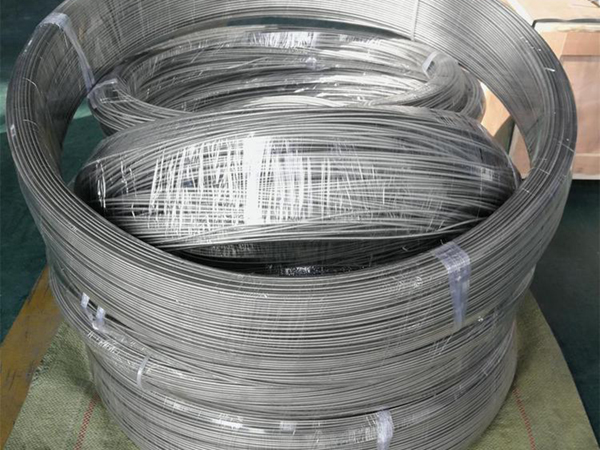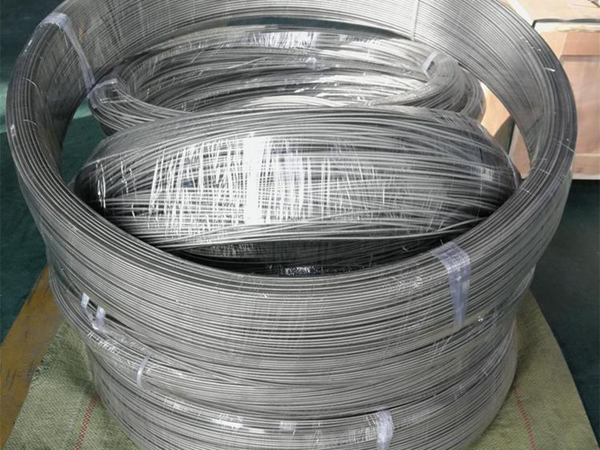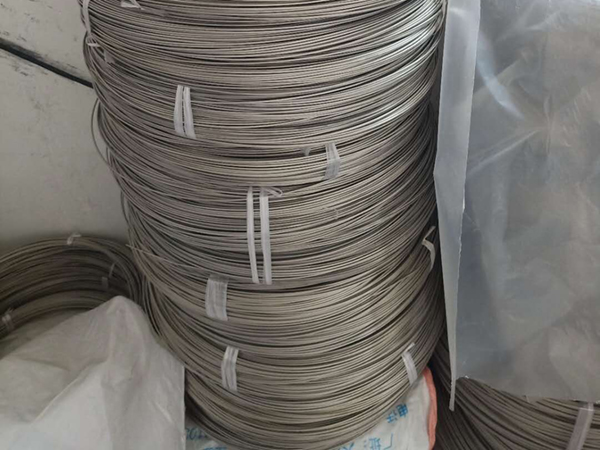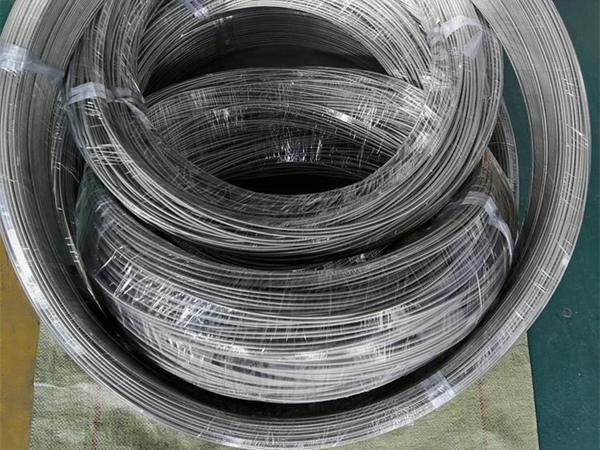Titanium welding wire NB/T47018.7—2011 4.2 Brand, status, size
Status
Cold working state (Y) Vacuum annealing state (M)
Grade: ER TA1 ELI ER TA2 ELIER TA3 ELI ER TA4 ELI ER TA9 ERTA10
Common specifications: Φ0.8 Φ1.0 Φ1.5 Φ2.0 Φ2.4 Φ3.0 Φ3.2
Surface condition: pickled, polished.
The ingot used to make welding wire and filler wire shall be smelted in a vacuum consumable electric arc furnace, and the number of smelting shall not be less than 2 times.
Uses: Titanium welding wire is used in welding reactor titanium, storage tubes of acidic substances or alkaline substances, and titanium equipment.
Precautions for the use of titanium welding wire for pressure vessels
1. Construction workers and welders should wear clean white gauze gloves (cotton gloves are strictly prohibited).
2. It is strictly forbidden to touch and touch iron objects by hand in the treated welding area.
3. The welding work should be carried out indoors as much as possible, and the ambient wind speed should be ≤0.5m/s to avoid being affected by draughts.
4. When welding, short arc welding should be used as much as possible, with a small welding heat input, and the nozzle and the weldment should maintain an angle of 70-80 degrees.
5. When the butt pipe is positioned welding, the butt gap is generally about 0.5mm.
6. Each weld should be completed as much as possible at one time. The welds that must be welded should be cleaned up before welding. The length of the weld lap should be 10-15mm.
7. During welding, the welding torch should not swing left and right, and the melting end of the welding wire should not be moved out of the gas protection zone.
8. The gas should be supplied in advance when welding and starting the arc, and the welding torch should not be lifted immediately when the arc is extinguished. The gas supply should be delayed until the temperature drops below 250℃.
9. The distance between the gas protection drag hood and the welding torch should be short, and the gap between the contact with the pipe wall should be kept small. When performing pipe butt welding, in order to meet the requirements of single-sided welding and double-sided forming, the welding is carried out in two parts: one is the back cover welding (the filling material is not necessary for the back cover welding), and the other is the forming welding. In multi-layer welding, you must wait for the previous bead to cool down before welding the next bead.
Metallographic inspection
The result of transverse metallographic inspection (low magnification) of welding wire and filler wire should not have cracks, folds, pores, delamination, shrinkage, metallic or non-metallic inclusions and other defects that affect the use.
Surface and macro quality
The surface of welding wire and filler wire should be clean and smooth, free of burrs, dents, scratches, oxide scales, folds, and other defects that affect use. There should be no contamination from lubricants and other foreign substances.
Longitudinal bending performance of deposited metal
After the longitudinally bent sample of the deposited metal is bent to a specified angle, there should be no single opening defect with a length greater than 3mm in the deposited metal on the stretched surface in any direction. The angular opening defect of the deposited metal of the sample is not counted. But there is no fusion, slag inclusion or other internal defects.
The main purpose
Military, medical, sporting goods, glasses, earrings, headwear, electroplating hangers, welding wire and other industries.







